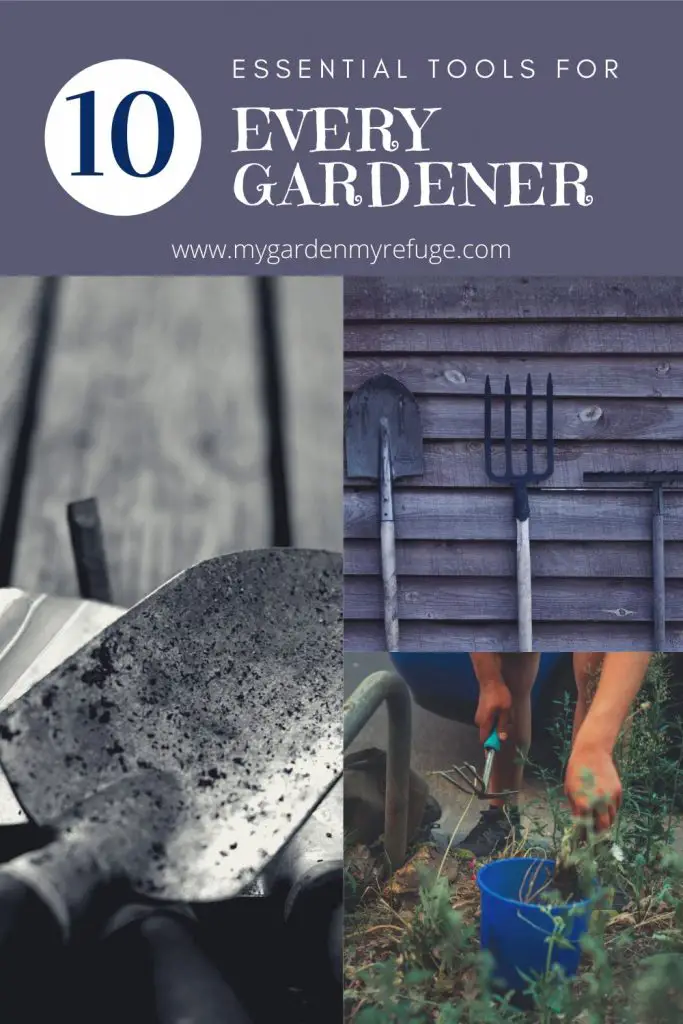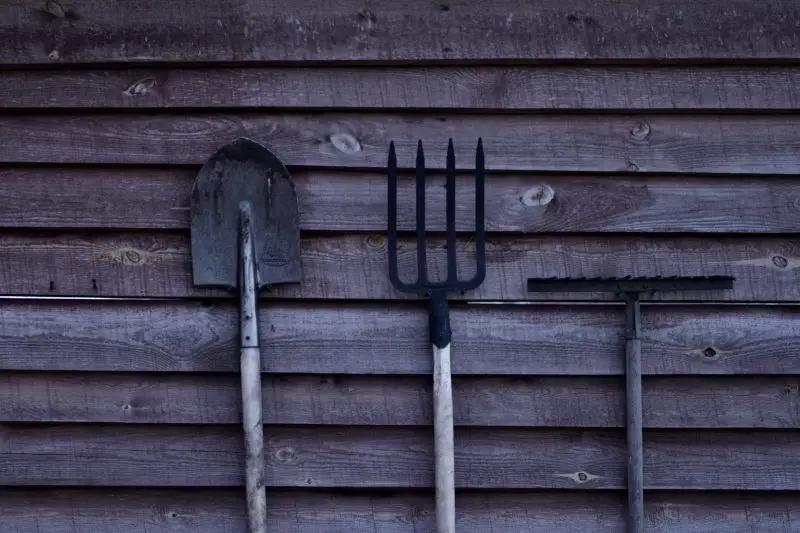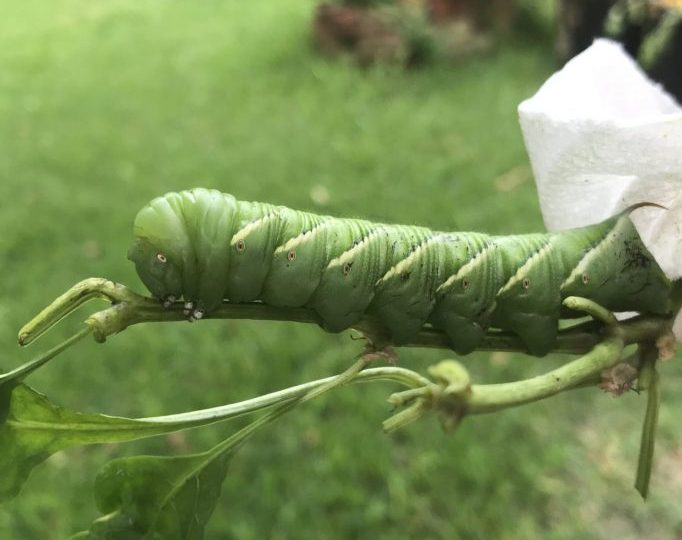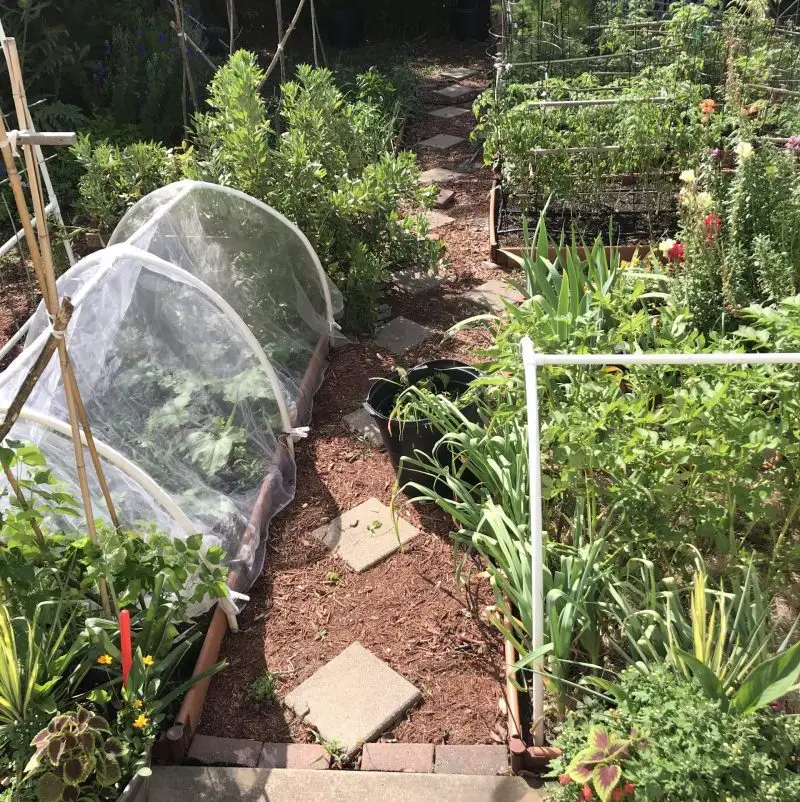Disclaimer: This post may contain affiliate links. Click here
Starting a garden can become overwhelming, especially when you start looking into all the tools available in the market. This post will discuss the essential tools every gardener should have. Late as your experience grows with your garden, you can expand your tool collection with novelties.
How to select a garden tool?
Choosing gardening tools is very personal and varies from one gardener to another. To help you make the right decision, focus on two main factors: the type of garden tasks you mostly do and the ergonomy of the tool.
1- Gardening tasks
Gardening tasks differ due to the different gardening methods followed by one gardener. For example, growing crops on a large or medium scale differs from growing them in a backyard. Also, using high-raised garden beds is not the as inground gardening. These are just two examples of how diverse gardening tasks could be.
In a backyard garden setting, you might opt for short-handled tools just because you might be doing more detailed tasks. On the other hand, bulky and oversized tools might be more helpful if you have a large property and grow things in a broader space.
2- The ergonomy of the tool
Ergonomy is the science of tool design intended to minimize discomfort and fatigue. Today the market offers gardeners a wide variety of tools made with different materials and shapes and sizes. It is essential to choose the one that fits your physical needs.
When shopping for a garden tool, try your best to try it first and handle it as accurately as possible. Notice the feel of the grip, the amount of force you need to apply, and so on. Gardening is already an intense job, so do not make it harder on your body.
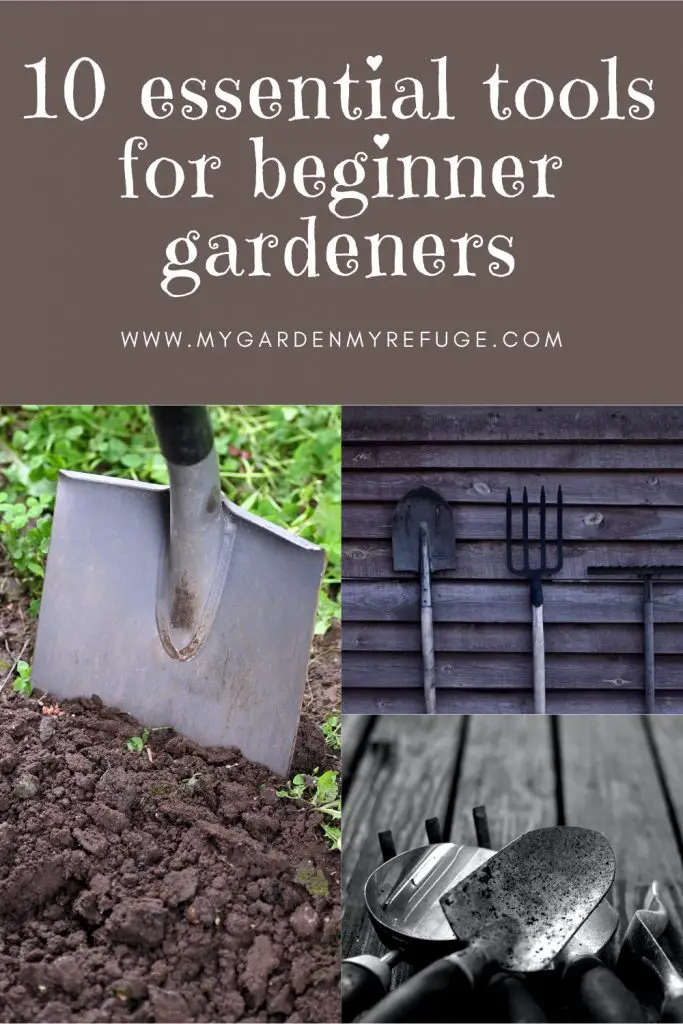
Most essential Tools
The following is a list of the essential tool to start your garden adventure.
#1 Shovel
Shovels come in different shapes, sizes, and materials. Try to spend your money wisely and choose the one that will last. Gardening is all about handling soil. A good shovel should allow you to dig and scoop soil easily. Here is what you should look for:
- A round shape with a pointy edge to slice into the ground easily.
- A slight scoop-like form to be able to scoop out the soil.
- An angled handle to prevent you from bending your back too much.
- An appropriate handle length for your body.
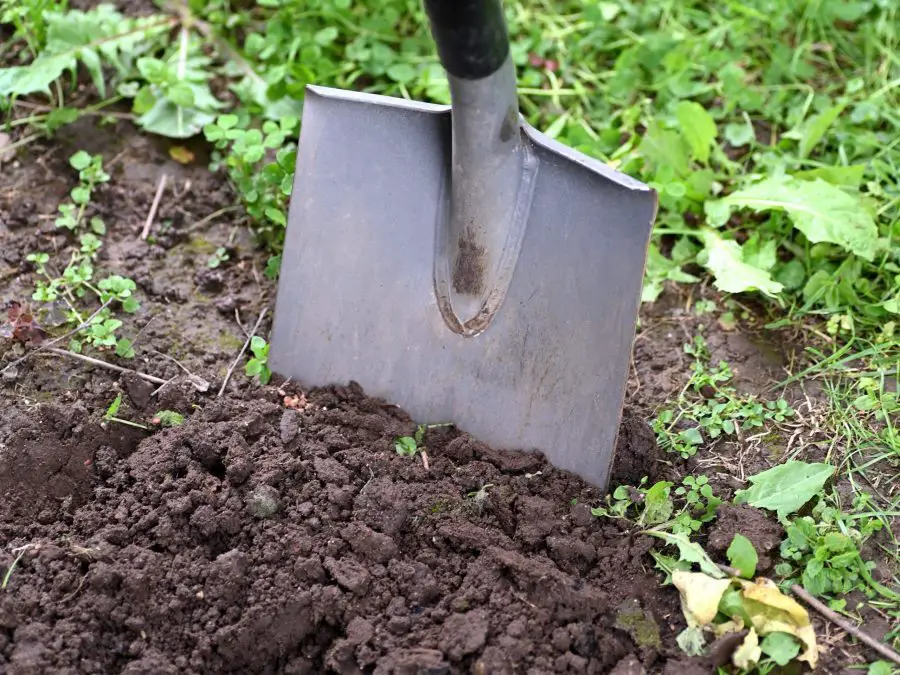
#2 Cart
After shoveling the soil, you need something to help you move it to your destination. Most of us use buckets, but something on wheels would be more helpful as our gardening tasks increase. Depending on your garden size, you may use a wheel barrel, gorilla cart, or a poly dump cart. Here is what you should look for:
- Proper size for your garden.
- Easy maneuver.
- Easy to dump the material out of it.
- Good grip and balance.
#3 Bow rake
We got our shovel and used the cart to fill the growing space with soil. Now we need to smooth the earth to our liking and prepare it for planting. This job requires a rake, which is like a comb for the garden. It spreads the soil evenly and rakes the leaves. Here is what to look for in a rake:
- Good grip and appropriate handle length.
- Good quality steel.
- Comfortable weight for you.
#4 Cultivator
Now we are getting down to the dirt level and getting closer to planting. A cultivator is a hand tool with two sides, one with three prongs and another with a flat blade. The pronged side helps loosen up the soil and maybe eliminate the growing weeds. The flat side helps dig small trenches and holes for planting. It also serves as a clump breaker.
#5 Trowel
A hand trowel is the most common garden tool. It is a small shovel that scoops soil and digs holes on a smaller scale. They are also helpful to uproot small plants to replant them elsewhere. Hori-Hori trowel comes with a serrated side that allows you to cut through the roots that can be in your way.
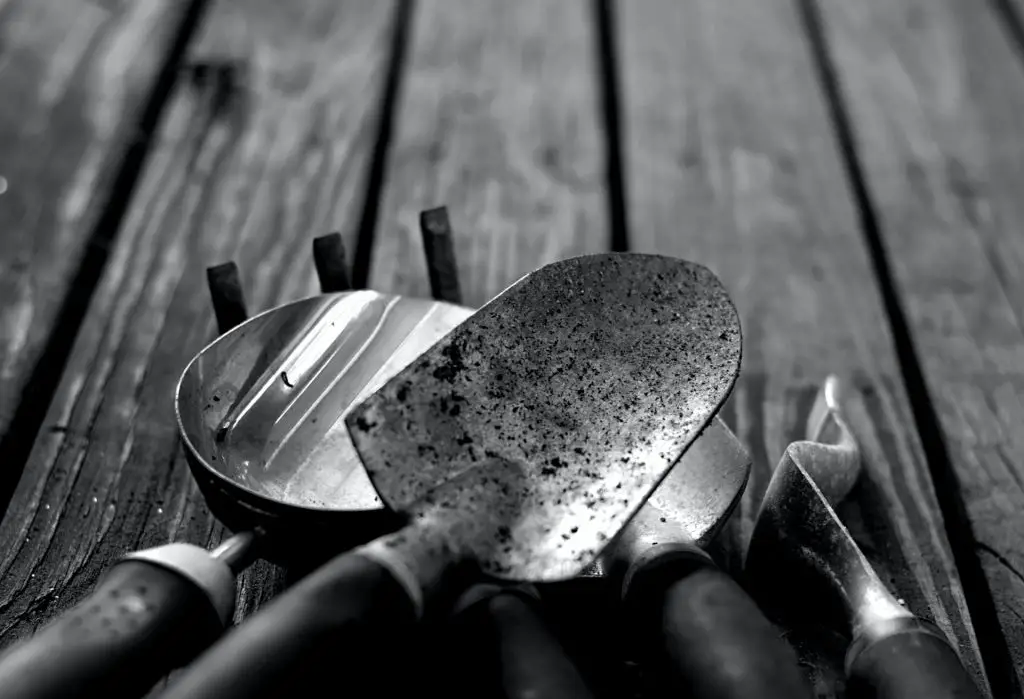
#6 Dibbler
A dibbler or dibber is a wooden or metal stick with a pointy side that makes inserting deep, narrow holes easier, especially for planting onions, garlic, leeks, and big-size seeds.
#7 Hose nozzle
After planting, it is time to water, and relying on watering might not be efficient. Choosing the proper hose nozzle helps you water your garden correctly according to its growth stage. Try to choose a nozzle with multiple settings to select the right water flow. The most important settings are:
- Mist: for watering delicate seedlings.
- Shower: for regular watering.
- Jet: for washing off insects from leaves.
There is also another element to add, and that’s the length. Using a long wand instead of a short nozzle helps you reach the farther or lower points of the garden bed without straining your back.
#8 Pruning sheers
Once your garden starts growing, it will need maintenance and upkeep. Pruning sheers might be the tool you will use the most. It comes in handy to prune soft and woody stems. Make sure they feel right in your hand as they will be your garden companion.
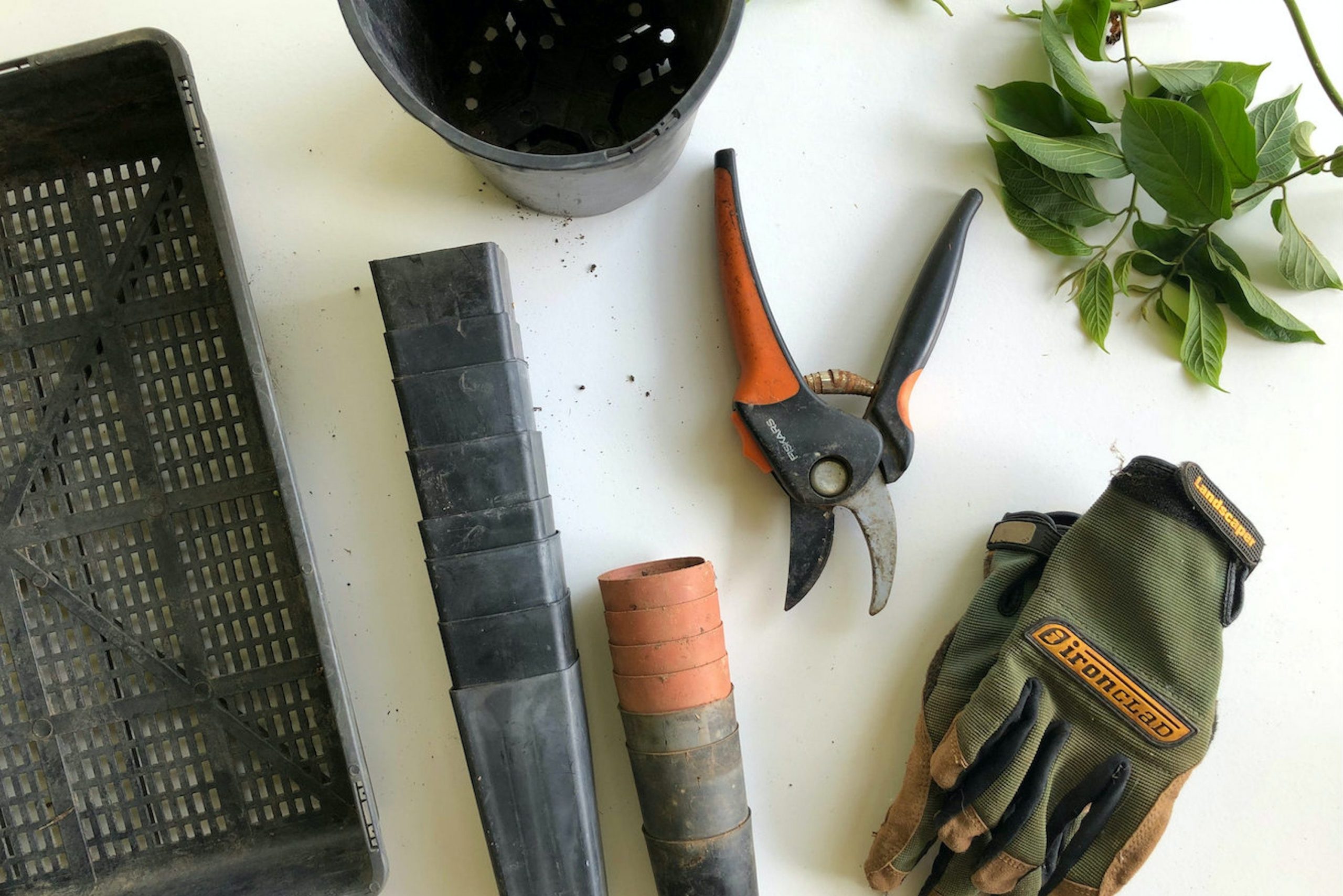
#9 Garden Fork
Having a garden fork is somewhat necessary. It is a great tool to till the soil and stir compost, but I find it most helpful to lift garlic and potatoes at harvest time. It is also handy to uproot plants. Again, select a fork with good quality steel and a strong handle.
#10 Gloves
Gloves are essential for gardeners, but most of us do without them. However, there are circumstances where gloves are a necessity. For example, working with soil exposes you to different critters, which can be nasty biters. Using good quality and well-fitting gloves can protect you from them. Also, thick and long gloves make handling thorny plants easier.
Conclusion
These are some of the gardening tools worth the investment. They are in such order following the timeline of gardening tasks from setting up to harvest.
